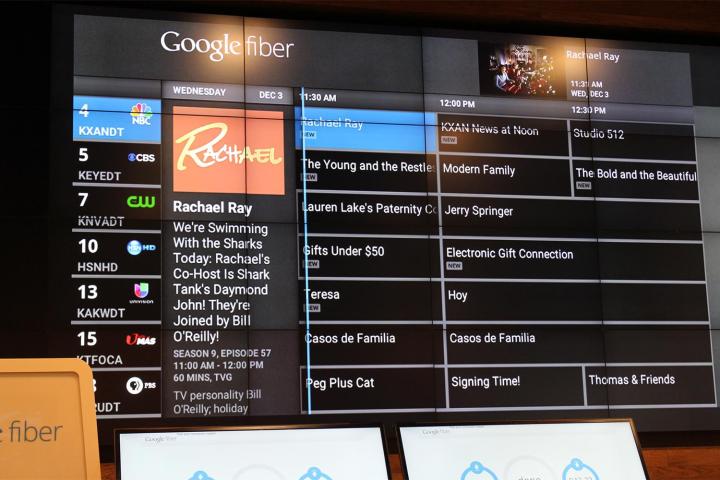Imagine lightning-quick downloading and uploading of massive files, a veritable smorgasbord of HDTV channels sitting next to your favorite streaming apps, and more cloud storage than you know what to do with — all for a reasonable price. For those lucky enough to live in Austin, Texas, this is no vision from the future, but a very close reality. That’s because this quirky, culture-rich music town is the next stop on the Google Fiber train.
It isn’t a stretch to say that the company is in position to radically transform the way we watch TV.
Google Fiber’s shockingly fast Internet service steals all the headlines, and that’s understadable. A full Gbps of Internet, which starts at $70/month on a 12-month commitment, boggles the mind in comparison to the 10-15 Mbps Internet that most of us endure. But as Google Fiber’s Head of Product Management Adam Smith puts it, what’s really exciting is what Google can “build on top of the Gig.” Google’s $130 Internet plus TV bundle, which takes the $70 package and adds 120 + channels of sparkling HDTV, sets a new standard for what we should expect from our Internet and TV providers, and is proof that the future of TV lives on the Internet.
Google’s crystal-clear new TV service is built around its Network+ box, an all-in-one delivery device which handles both Fiber Internet, and Google’s new fiber-based IPTV. Imagine your Wi-Fi router, but much, much faster, and with a 2 TB hard drive for up to 500 hours of HD storage, the ability to record up to 8 shows at a time while watching up to 6 others, and the latest dual-band antenna Wi-Fi technology with support up to 802.11 ac. And that’s just the beginning.
The Network+ box is able to offer picture quality that’s better than what you’ll get from other cable and satellite services.
Thanks to Fiber, the Network+ box is able to offer picture quality that’s better than what you’ll get from other cable and satellite services. Since the pipe bringing the TV information in is so huge, less compression is needed. The proof was put before our eyes, as we watched live TV spread across a massive screen in brilliant resolution. Think HDTV that looks more like broadcast HD or Blu-ray disc than what you get from cable or satellite right now. The box also offers a powerful content search engine, as well as what Google calls “smart record,” which can seek out and record the best HD versions of specific shows, as well as content that features a particular actor, or even your favorite sports team.
In addition, users can use their iOS or Android devices to search, control the TV, and watch every channel live. And Android Wear devices will also sport the similar controls. The Network+ box also has basic streaming apps on board, such as Netflix, Vudu, and Youtube, putting your entertainment all in one place.
To get the signal from the Network+ box to your TV, Google has designed separate TV boxes, which use MoCA 2.0 to transfer the Fiber streams via high-speed signal through a Coaxial cable. That allows you to use your home’s existing coax cable system, if you already have it installed, with CAT5 wiring as an alternative to connect each unit to the central Network+ hub. The TV box then hooks up to your TV via HDMI, component or composite video connections. And as a bonus, each box also acts as a Wi-Fi extender, in order to ensure better Wi-Fi performance throughout the home. The $130 package includes 1 free TV box, and users can add up to 5 more at an additional $5 each per month

Finally, Google showed off Fiber’s upgraded remote, which offers low-energy Bluetooth to send signals without the need for line of sight, as well as motion-sensitive backlit buttons. Doesn’t it just make you want to sit down and watch TV right now?
As the service rolls out in the first few “fiberhoods,” South and Southeast Austin residents will be encouraged to sign-up before the deadline, after which Google will roll in and install the service blitzkrieg style, before moving on to the next neighborhood. Though the service just opened up enrollment on Cyber Monday, Google claims that several areas have already reached their required signup goal to get things started. And anecdotally, as you might imagine, several people came into the demo space excited about it, saying things like “Sign me up now,” after a brief look, and “I can’t wait to dump Time Warner Cable!”
So who’s next for Google Fiber once Austin gets hooked up? Google’s not telling … yet. But if you’re anything like us, you’re crossing your fingers that Google Fiber’s next stop will be in your town.










